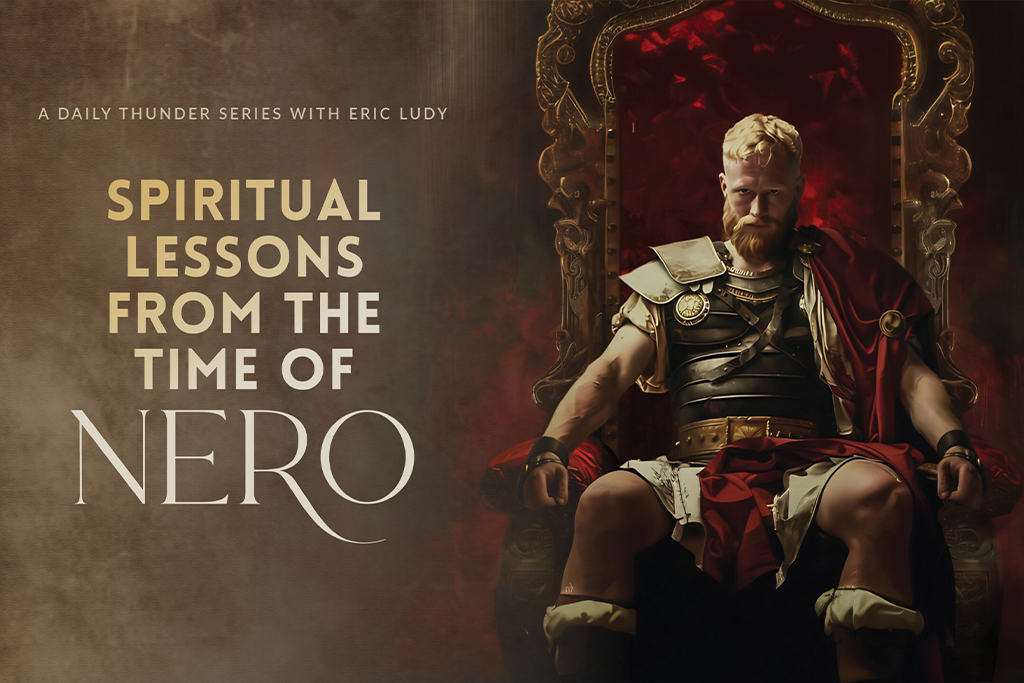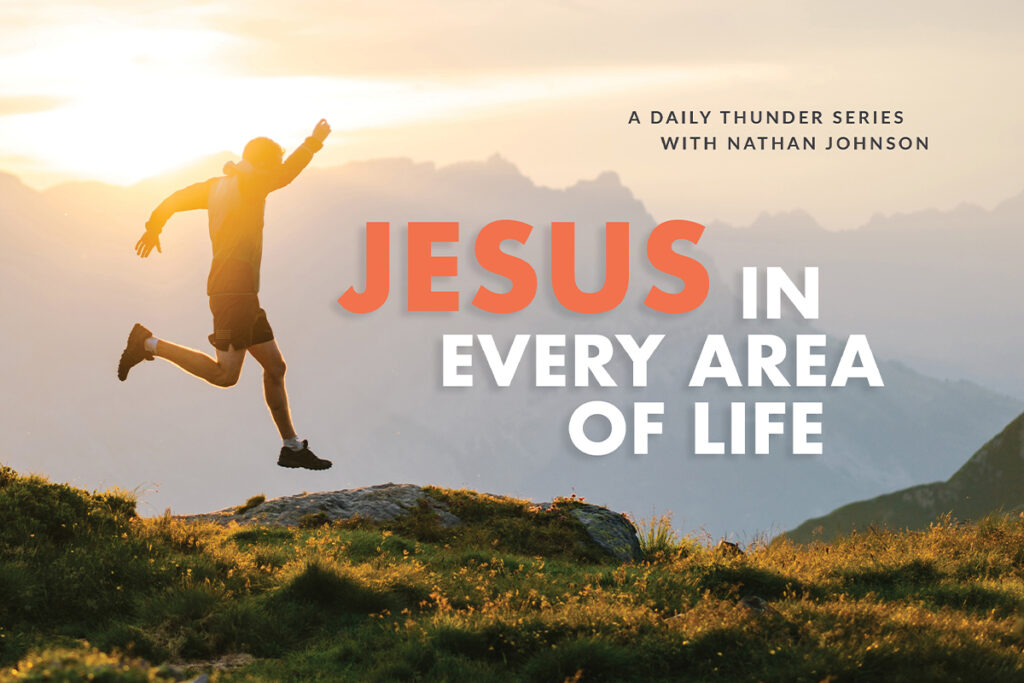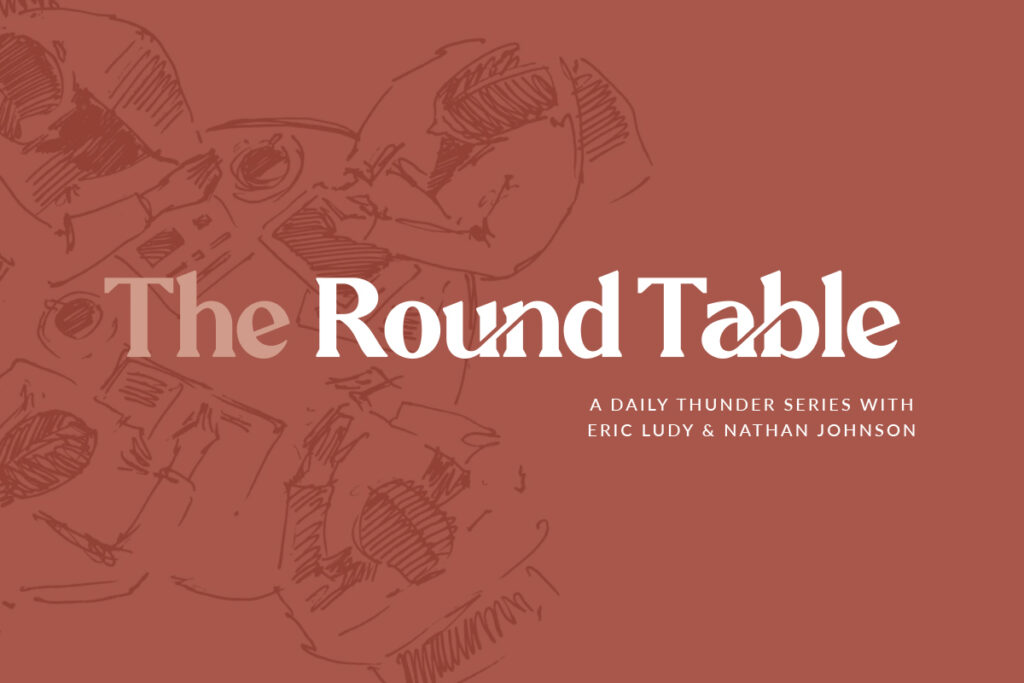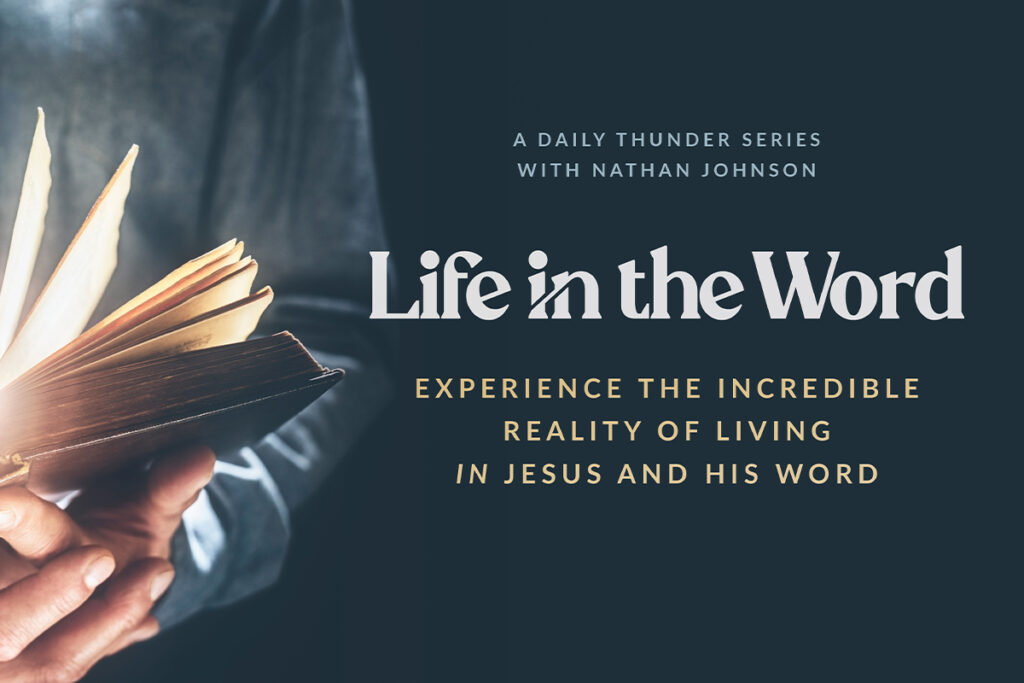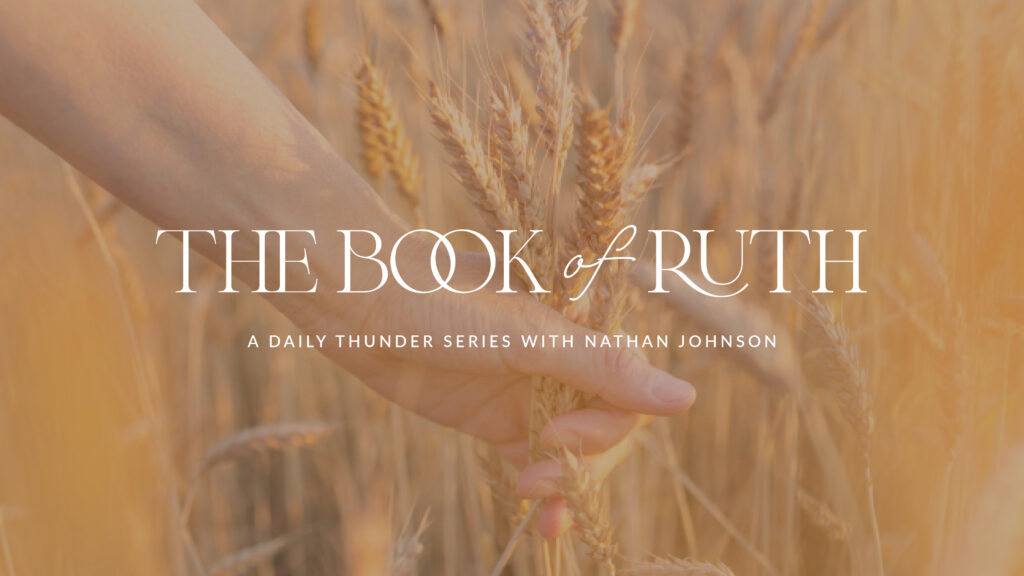
A Daily Thunder Series with Nathan Johnson
The Book of Ruth
A Shadow of the Ultimate Love Story
Part 1: Setting the Stage (Ruth 1:1–2)
As we begin our eight-part study in the book of Ruth, it is necessary to zoom out and examine the book from a 10,000 foot view—who wrote the book, how is it structured, where is it placed in Scripture, etc. These broad sweeping strokes help us set the stage to see the focus and major themes of the book—primarily, the redemption and lovingkindness of our God. Moreover, in order to properly understand this little gem of Scripture, we need to be acquainted with three key tensions that appear at the beginning of Ruth.
Part 2: The Beauty Amidst Bitterness and Blight (Ruth 1:3–22)
Difficulties and uncertainty often arise in our lives when we least expect it. The question we must answer in such moments is not “why” but “how”…“how does God want to use this challenge in my life?” In this study from Ruth 1:3–22, we discover that Naomi’s life is at rock bottom, her life is practically over—and sadly, she blames her bitterness on God. Yet amidst the story, we find beautiful hope in Ruth the Moabitess. Join Nathan as we explore this stirring story from Ruth 1 and what it practically means for our lives today.
Part 3: A Miraculous Meeting (Ruth 2:1–23)
In a desperation for food, Ruth decides to glean in the fields of Bethlehem. Not knowing where she is going, she “just so happened” to find herself in the fields of Boaz. This miraculous meeting becomes the avenue for God to showcase His lovingkindness (hesed) to Ruth and Naomi, providing far more than they could ever have hoped or imagined. In this study of Ruth 2:1–23, we discover that even when it feels that God is distant or not doing anything, He IS at work and He has not forgotten us—for His lovingkindness endures forever.
Part 4: The Sketchy Scheme (Ruth 3:1–5)
Throughout Ruth 1–2, God has been at work, seemingly behind the scenes. Naomi has seen His hand move and how He has orchestrated things to this point; God has not forsaken His hesed (lovingkindness). Yet Boaz is not moving things forward with Ruth even though it has been a couple months. In a “last chance” effort, since the harvest is nearly finished and Ruth will no longer be going to Boaz’s field, Naomi takes things into her own hands and crafts a sketchy scheme to make something happen. Join Nathan in this study of Ruth 3:1–5 as we investigate Naomi’s “sketchy scheme” and how it points to our response to Christ and His work upon the cross.
Part 5: Profound Pinions and Promises (Ruth 3:6–18)
As Ruth approaches Boaz in the dead of night, what began as a potentially sketchy and dangerous plan became a blessing and profound promise from Boaz. In this message from Ruth 3:6–18, we explore the threshing floor (a place of suffering and redemption), four significant concepts for what it means to be covered by wings (pinions), and the restless pursuit of a kinsman redeemer for his bride.
Part 6: Relative Redemption (Ruth 4:1-11)
Throughout the book of Ruth, we encounter the concept of a “kinsman redeemer,” but few of us understand the importance and profundity of this redemption by a relative. In this message, Nathan explains the concepts of kinsman redeemer and the Levirite Marriage—showing how they help us understand Ruth 4:1–11 as well as point to our precious Savior, Jesus Christ—THE Kinsman Redeemer.
Part 7: Topsy Turvy (Ruth 4:11–17)
As the book of Ruth nears its end, everything appears to be topsy-turvy. Boaz gets the girl, Naomi gets a son, a Moabitess is blessed by Israelites, and the nanny is cared for by the child. Despite the appearance of everything being upside-down and a bit backwards, the mercy, providence, and love of God is front and center. Join Nathan in this study of Ruth 4:11–17 and see how even topsy-turvy circumstances can lead us unto Christ Jesus.
Part 8: The Beloved Bloodline (Ruth 4:17b–22)
The book of Ruth ends with a genealogy. While many Westerners are quick to jump over such lists, this one should cause us to pause and stand in awe. In this final message in the series, Nathan explores this powerful conclusion to the book of Ruth and gives ten reflections and implications for our lives in light of this little book of Scripture.




